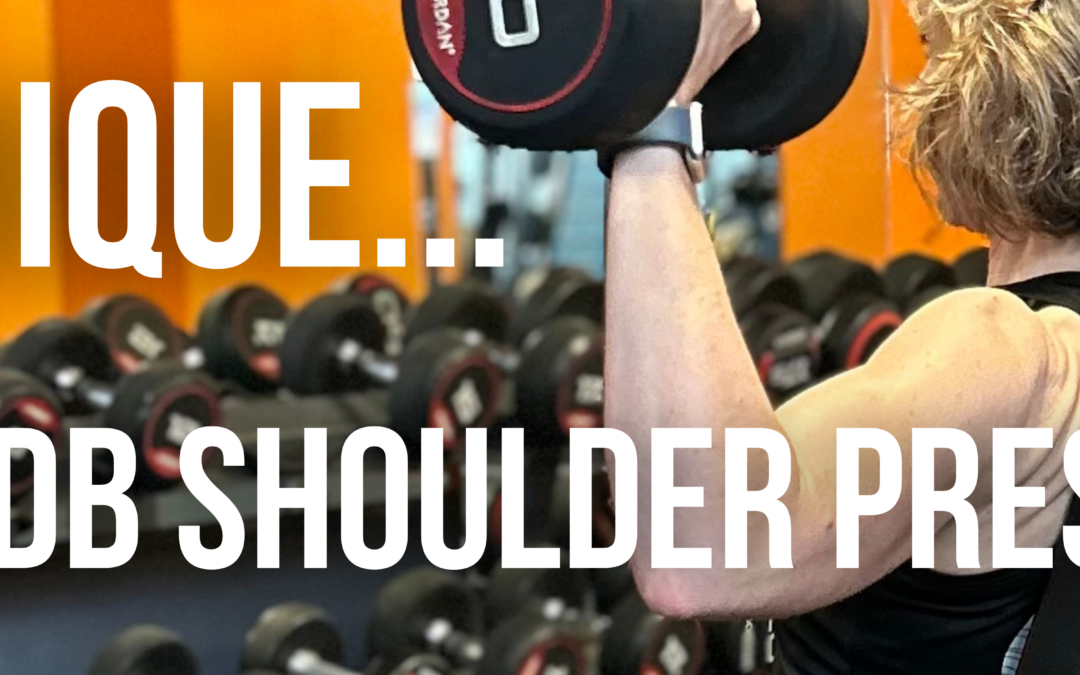Primary muscles worked: front shoulder muscle (anterior deltoid).
Secondary muscles worked: lateral deltoids, triceps, pecs.
Anatomy: The shoulder joint is the most mobile joint in the body being able to perform multiple actions: abduction, adduction, flexion, extension, internal and external rotation, and circumduction. It is however only a shallow ball and socket joint so relies on the surrounding soft tissues – muscles (such as the rotator cuffs), tendons, ligaments, and cartilage to support it.
The dumbbell shoulder press is quick to set up and weights can be easily adjusted. Using dumbbells for the shoulder press makes this an effective unilateral strengthening exercise as well as a useful opportunity for identifying strength imbalances. Due to the unstable nature of pressing with dumbbells this exercise really challenges neuromuscular connections for each arm individually as opposed to using a barbell for an overhead press version for example where often our stronger arm can take the lead.
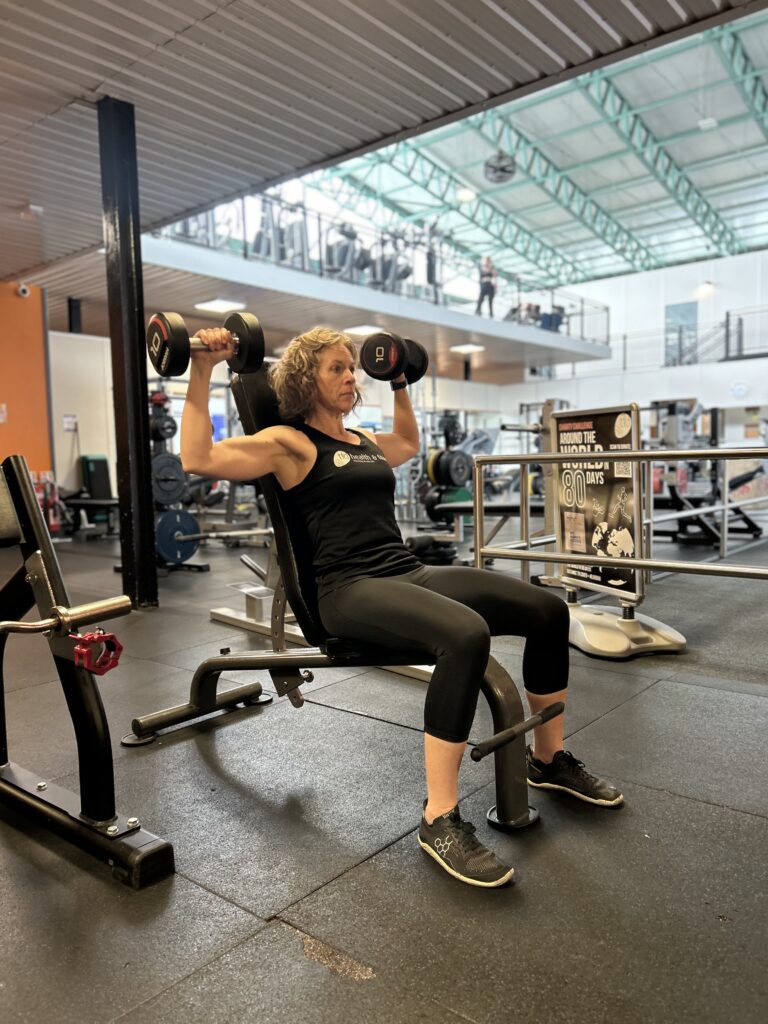
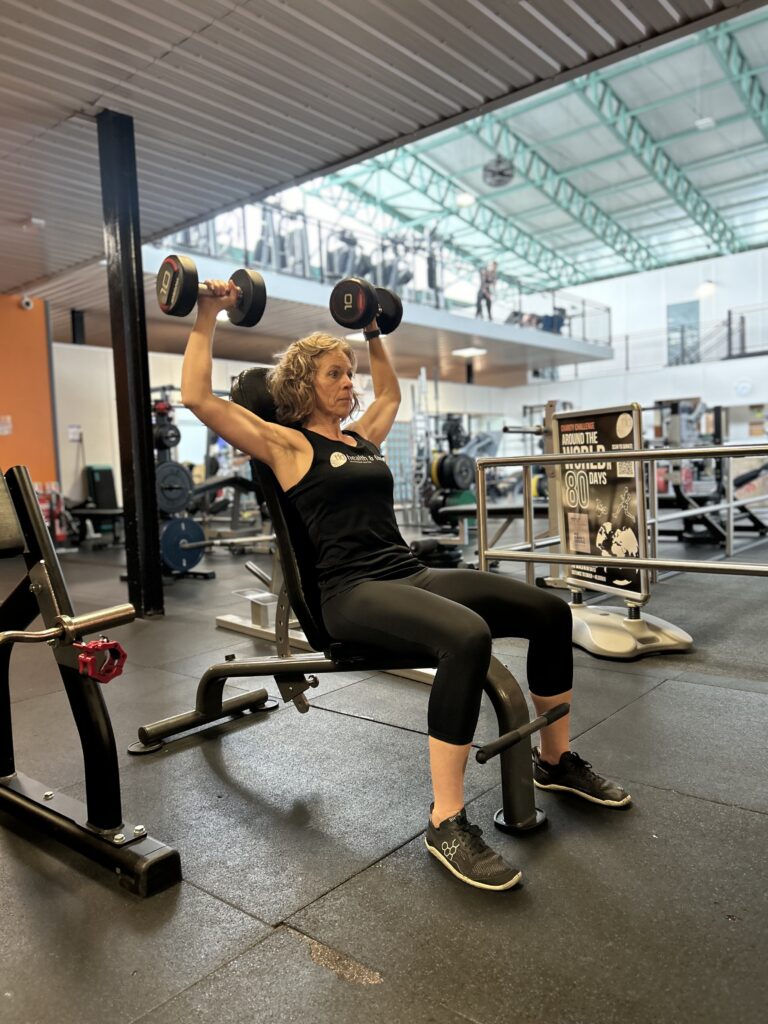
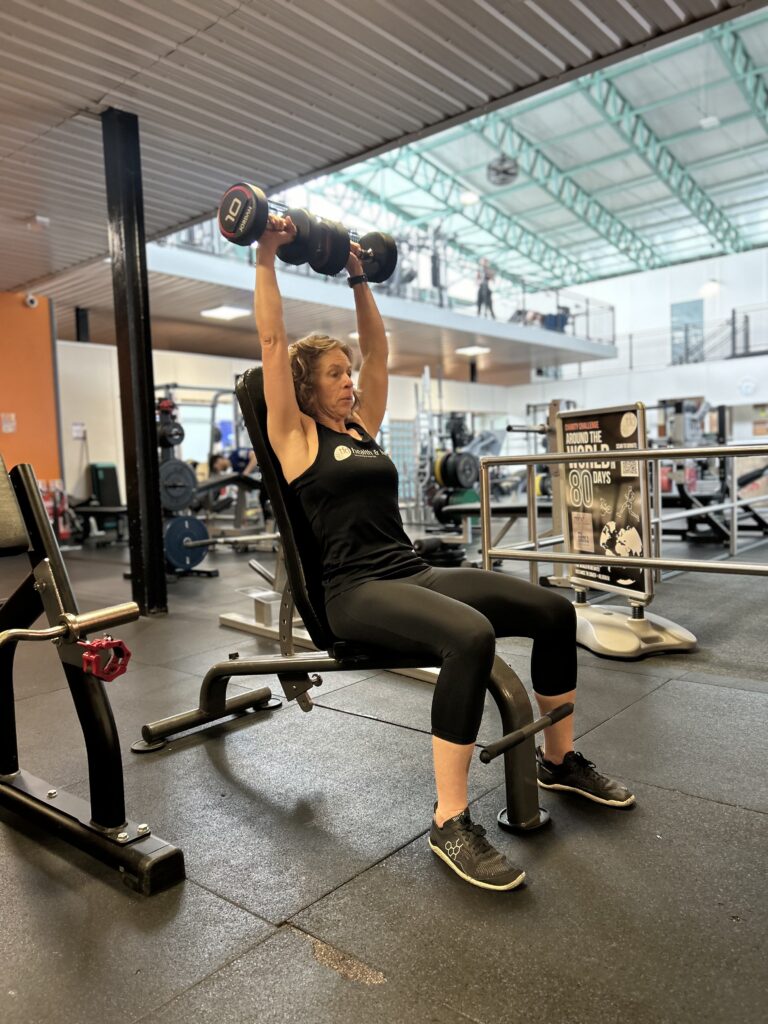
Suggested warm-up exercises for this exercise: arm circles, arm corkscrews, shoulder rolls, resistance band pull aparts.
Set-up: Set a bench to the upright position and take a seat. Depending on the dumbbell weight you choose, you may need to “kick” them up with a knee drive into the start position.
Starting with the dumbbells in line with your ears, palms facing away and arms at around 90 degrees with the elbows facing slightly forward places the emphasis of the move more on the anterior deltoid muscle (front shoulder.) If you start with the dumbbells lower and the elbows further down the ribs, the move will incorporate the triceps more. Angling your arms slightly forwards can reduce strain on the rotator cuff muscles too. Be in front of a mirror where possible so you can check your form and find the grip and arm position that works for you.
Inhale as you engage your core being mindful not to over-arch in your lower back and puff your chest out. Exhale as you press the dumbbells up until your elbows are almost locked, push through your feet as you drive the dumbbells up so they almost touch. Inhale at the top or as you reverse the move bringing the dumbbells back down to the start position.
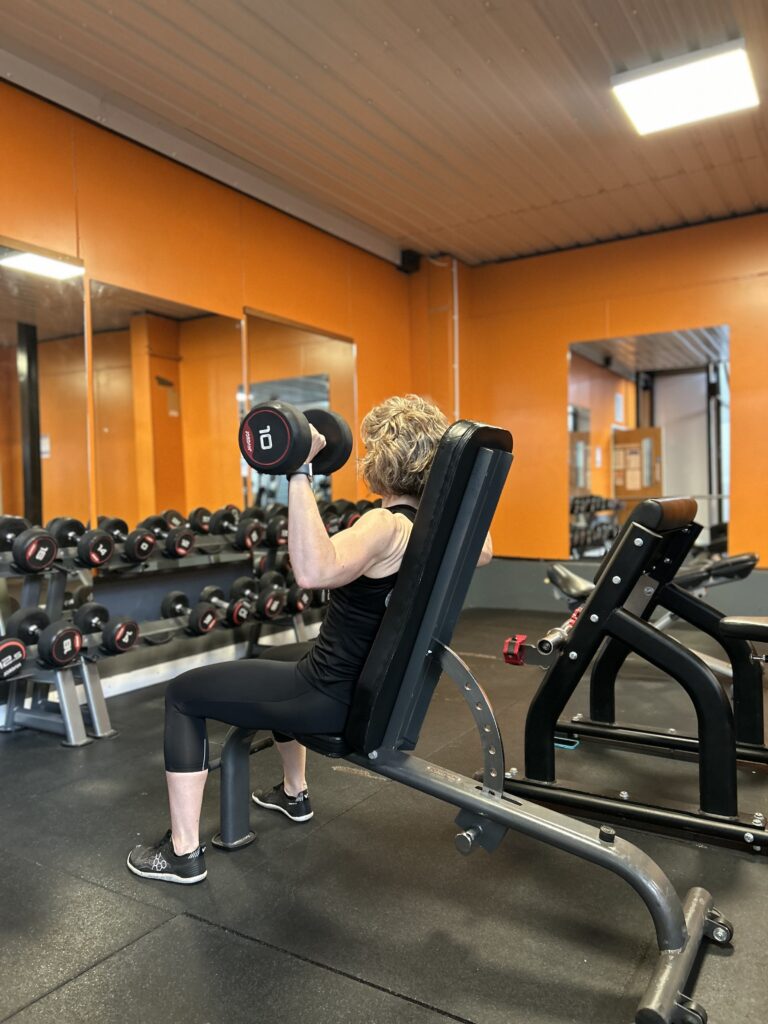
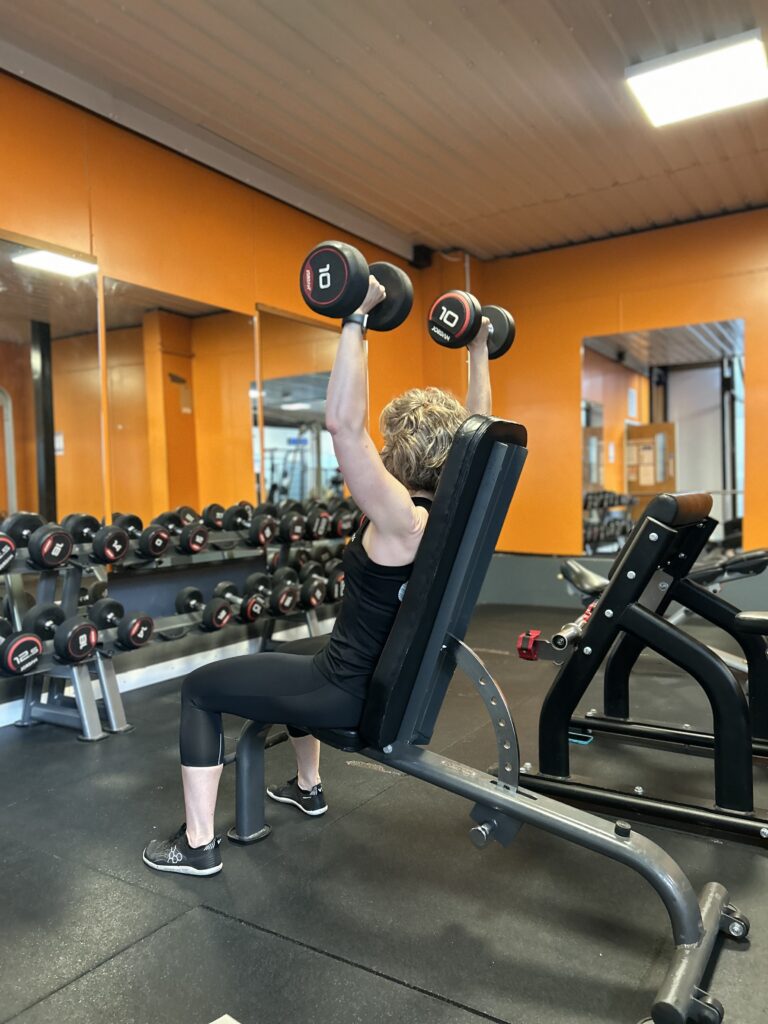
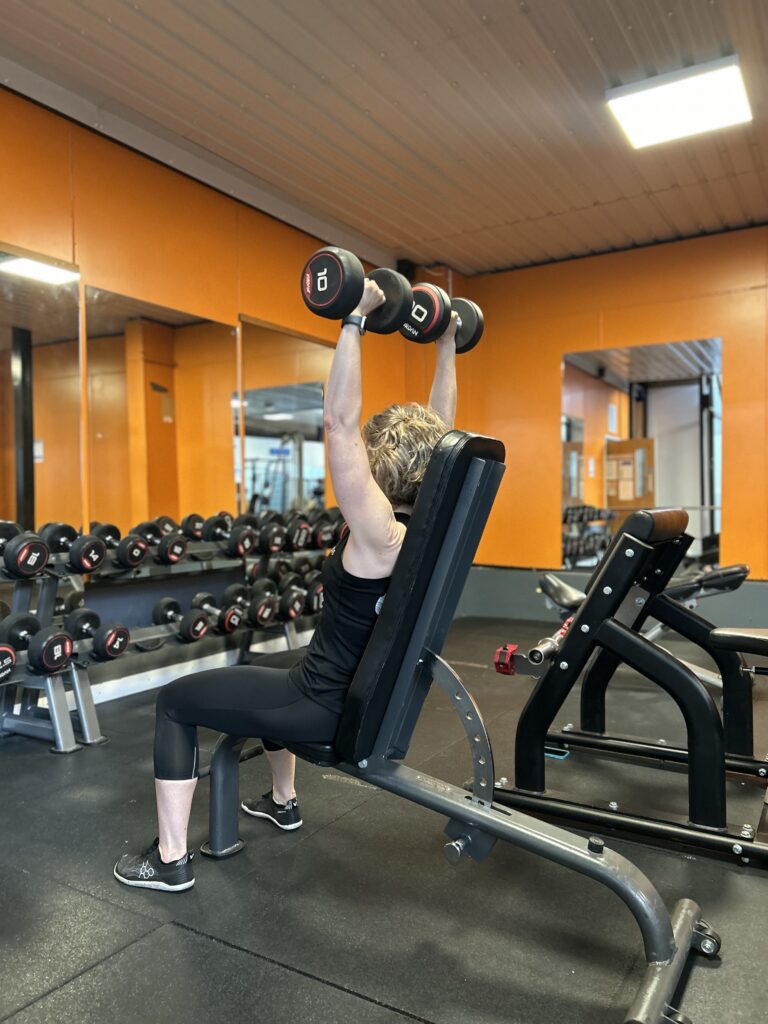
Variations:
- For more core work try performing this exercise standing as it will work to stabilise you as you press, you may need to lower the weights compared to performing this exercise seated, however.
- For more triceps engagement begin with a lower dumbbell start position.
- For more stability in the movement try the overhead barbell press – seated or standing.
- For more focus on pressing with just your shoulder muscles you could try the Smiths machine whilst seated –this does move in a fixed path however so removes the stabilisation element of the exercise.
- For interest in your workout, use a hammer grip with dumbbells with your palms facing inwards towards you.
- For a real focus on and identification of strength in each arm individually try performing the shoulder press with alternating arms.
Common mistakes:
Using momentum or bouncing into position. Focus your mind on engaging the shoulder muscles to perform the move.
If you experience soreness in your rotator cuff muscles from this exercise, you may have your arms positioned too close to your head – try placing the arms just slightly forwards of the body instead.
Shrugging your shoulders up to your ears – when setting up, imagine sliding your shoulder blades down into your back pockets first.
Blog by Elaine Butler – Nutritional Advisor & Personal Trainer

